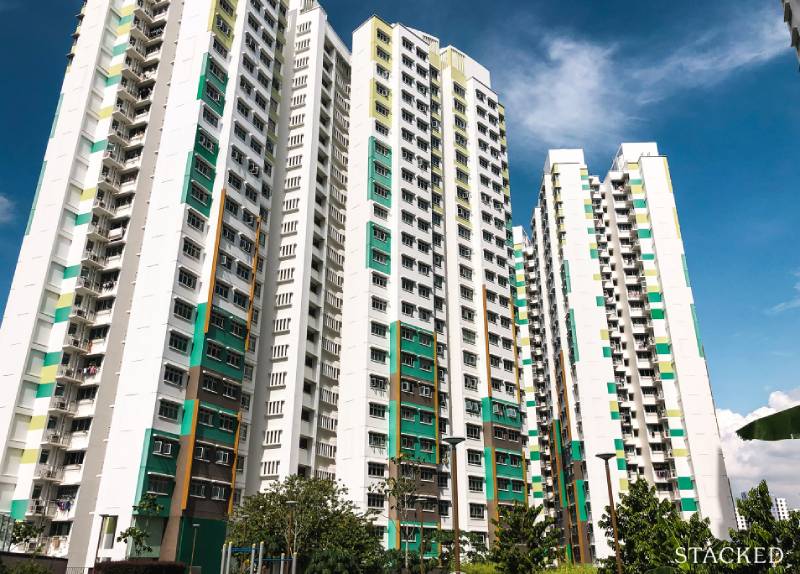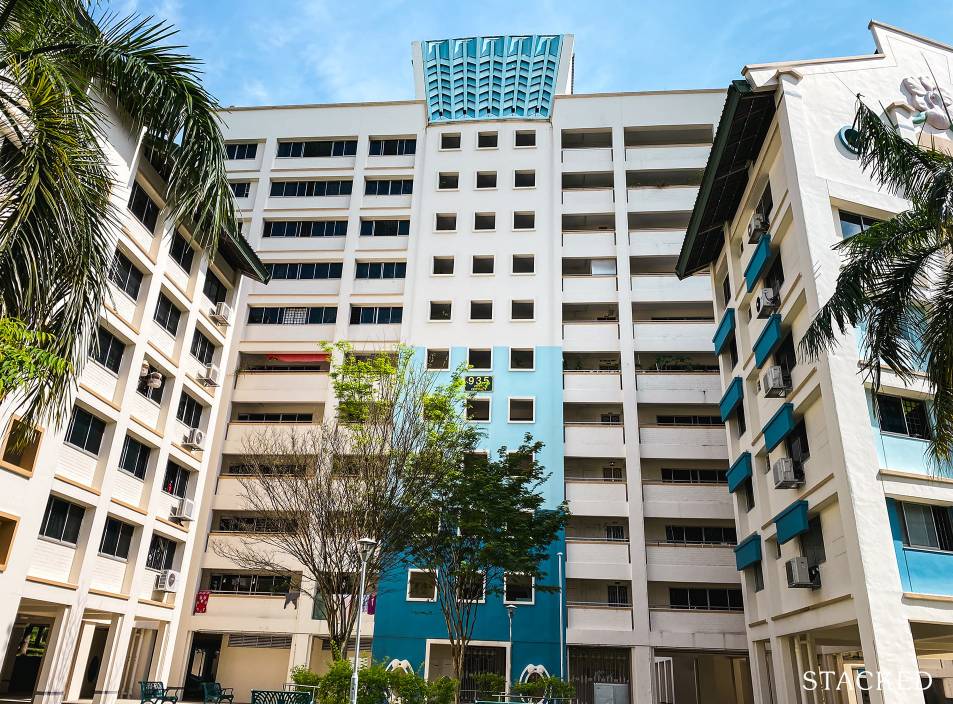Is 2022 the best or worst time to upgrade from an HDB flat?

Looking ahead in 2022, one question is likely to stand out: Is it a great time to upgrade, given record high resale flat prices? Or is it, conversely, the worst time to upgrade, given that property prices are high across the board? There’s no single answer to this, as every buyer’s situation is unique; but there are some common points that can guide your decision:
According to HDB data, resale flat prices surged by 12.7 per cent for the whole of 2021. This marks the most rapid ascent in prices since 2010, with prices now at between $508 to $512 psf, island-wide.
The average during the last peak, in May 2013, was just around $478 psf:

Besides this, resale flat prices have seen Cash Over Valuation (COV) rush back into the picture. In 2020, about a fifth of all resale flats were sold above valuation; but this number had risen to account for a third of all transactions, by 2021.
This corresponds to the record-breaking number of flats reaching the million-dollar mark. We saw 259 flats transact at $1 million or higher for 2021, with around 40 units reaching at least $1.2 million (in 2020, only seven units managed to reach this quantum).
So why isn’t this clearly the best time to sell?
Naysayers raise a fair point, noting that “you sell high, but you also buy high” right now. Despite the impressive turnaround in resale flat prices, we should stay aware of how little the gap between public and private has really narrowed.

Now, this is a quick glance, and shouldn’t be taken too literally; but loosely speaking, the price gap between public and private housing (on a price psf basis) has remained largely the same over the past 12 months (excluding ECs).
Private non-landed home prices (excluding ECs) are also at a peak. Singapore-wide, the typical condo now costs between $1,684 psf to $1,779 psf, with new launch condos averaging $2,034 psf in January 2022.
In light of this, it’s no surprise that so many aspiring upgraders remain disgruntled. One of the most common complaints we hear is that, despite all the news of resale flat prices at a peak, aspiring upgraders don’t feel their position is much improved since 2020.
Notable issues with upgrading right now:
With regard to the TDSR, we should point out that — quite frankly — if you’re pushing the very limits of the 55 per cent cap, it may not be right for you to upgrade, regardless of the market conditions. If you want to be really prudent, you’d want to avoid debt obligations of more than 30 per cent of your monthly income.
[[nid:564110]]
That said, the lowered TDSR limit might dissuade some upgraders. Failing to meet the new 55 per cent limit may require a higher down payment, which brings us to raise the question of whether their flat sale is sufficient.
The bigger factor, we feel, will be the ABSD increase: From 12 to 17 per cent even for Singapore citizens (on the second property).
Even if you qualify for ABSD remission later, you are required to pay the ABSD upfront first: This is due within 14 days of completing the transaction. On a $1.5 million condo, for example, this means an extra $255,000 (as opposed to $180,000, before the last cooling measures).
For HDB upgraders, this can create a conundrum:
You can sell your flat before buying a new condo unit, which would spare you from the ABSD. However, this often means needing temporary accommodation while you’re between homes, and rental rates are at a six-year high.
Alternatively, you can buy your condo before selling your flat — but then you have to fork out the ABSD first, and you’re taking on a bigger risk (as if you can’t sell your flat within six months of purchasing the new property, you may lose the ABSD remission). Note the ABSD remission is only for married couples if the remission conditions are met.
Couples who are both Permanent Residents can’t even get ABSD remission at all, and the higher ABSD rate leaves many of them with no choice but to sell before buying.

Covid-19 has disrupted the supply of materials and labour, with costs rising by as high as 20 to 50 per cent. This is in addition to other logistical issues with moving right now, such as the higher likelihood of renovation delays.
From our conversation with Interior Designers and contractors, however, waiting until Covid is over may not help. One contractor cautioned that prices are unlikely to “fall to normal” once the pandemic is over, as prices tend not to fall again once the market has adapted to them. So if your idea is to put off upgrading until reno costs fall, bear in mind it may not work. You may just be delaying the inevitable.
Nonetheless, the general consensus is that moving house during Covid-19 is especially unpredictable. Upgraders who urgently need a home may want to put off more elaborate design plans till later and settle for easier changes right now.
Home loan rates have been at record lows for a long time, and are currently at about 1.3 per cent per annum. However, this is set to rise again as early as 2022, as the US steps up interest rates to combat inflation.

Upgraders have good reason to be concerned about all this. Besides the risk of paying more, there’s a psychological significance: The HDB loan seldom changes from its 2.6 per cent rate, but bank home loans (needed for private properties as well as ECs) are more volatile.
A loan of $1 million at the current interest rate, over 20 years, would mean about $136,135 in interest repayments by the end of the loan. Bump it up to just two per cent, and the total interest paid rises to about $214,120.
Besides that, the monthly loan repayment amount would rise from about $4,734 to about $5,058.
When interest rates were low, most aspiring upgraders only saw an upside. But now, confronted with taking on a variable rate over a typical loan tenure of 20 years, doubts begin to surface. Note that before the Global Financial Crisis that lowered interest rates in ’08, the average home loan rate in Singapore was a whopping four per cent (although it’s very unlikely rates will rise to that level anytime in the near term).

As a reason why you should upgrade, it’s important to note that the rise in resale flat prices isn’t sustainable. Already, the government intends to ramp up BTO production, by around 35 per cent over the next two years.
While this won’t immediately pull down resale flat prices, most BTO flats will eventually join the pool of resale flats. There’s also a fair argument that the recent uptick stems from an unusual event: A global pandemic that prompted a rush for personal space.
If we want to take the long-term view, HDB flats were on a price decline from 2013, right up till around early 2020. Upgraders who take this view see the current price spike as an opportunity and one that’s unlikely to come again soon.
READ ALSO: Buying a home in 2022? Here's an 8-step preparation list
If you’re convinced that resale flat prices can’t maintain or narrow the gap with private home prices in the long term (e.g., 10 years or more), then now is the time to upgrade… even with the aggravation of higher upfront ABSD, or having to pick a smaller condo for affordability.

Right up till 2019, the issue of the “99-year time bomb” dominated public opinion. The fear of declining HDB values, based on lease decay, was partly behind the weakening demand for resale flats.
Worries got to the point where even the government felt the need to point out 50-year-old flats could still appreciate.
Now in 2022, however, older flats (which tend to be larger) aren’t just easier to offload: Getting COV is also more likely, given that the demand for space is a major factor among buyers.
READ ALSO: 6 major property trends to watch in the Singapore property market in 2022
Buyers who purchased older, larger flats when they weren’t in vogue might stand to reap significant profits, assuming they’re past the MOP date.
For those who have long been eager to escape an ageing HDB flat, this is probably their golden moment — even if means just upgrading to a five-year old HDB flat.
Otherwise, we’d say the overall situation is 50-50 for upgraders right now. The big spike in resale flat values helps, but not to the point where upgraders should get overly ambitious.
This article was first published in Stackedhomes.